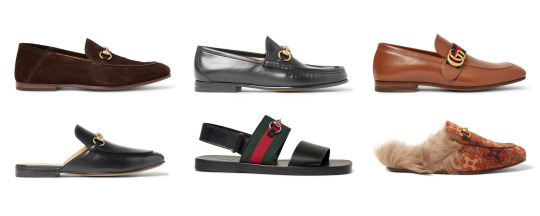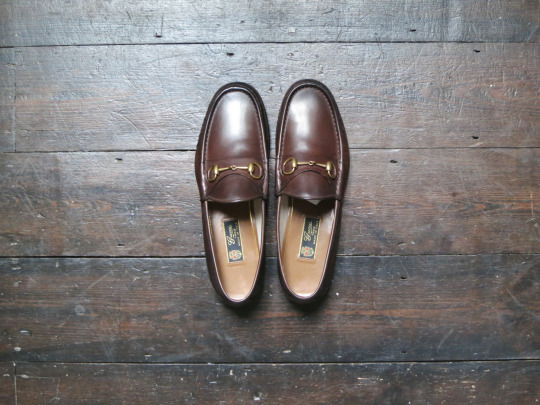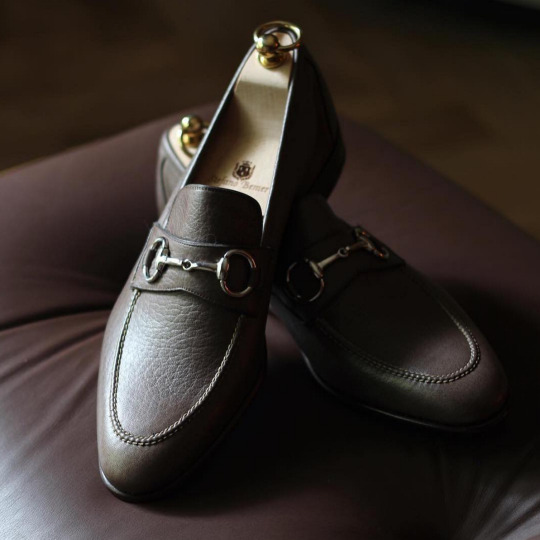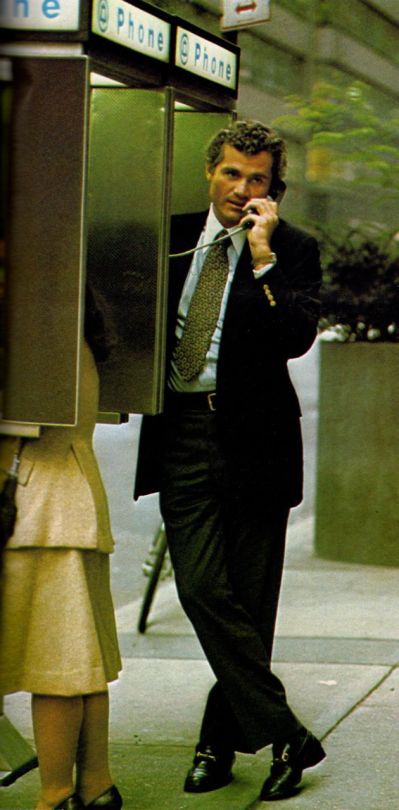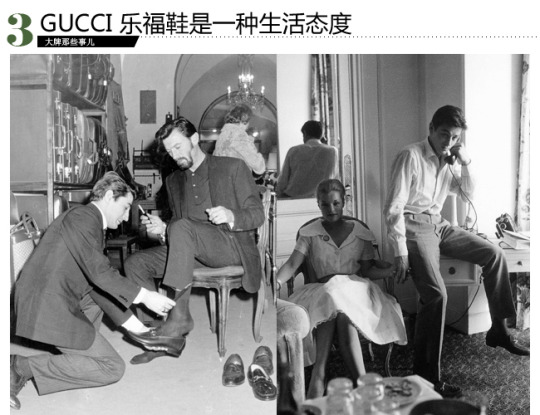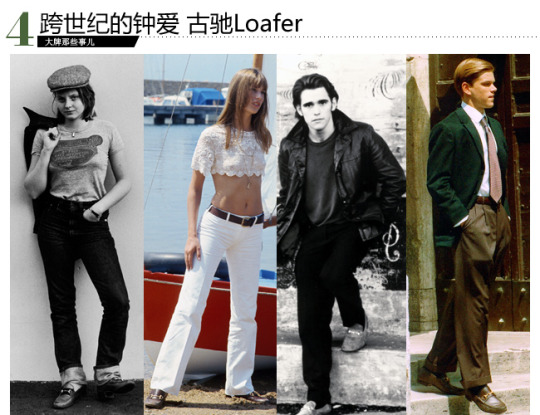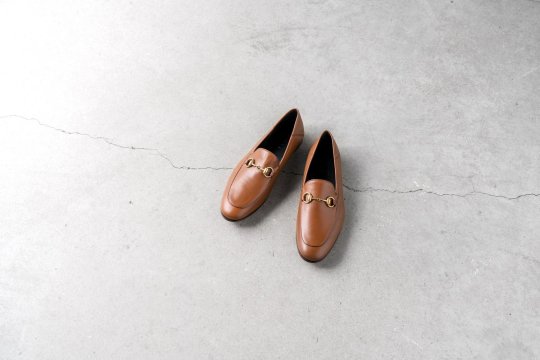
No shoe style is more controversial than the bit loafer. Part of is that slip-ons have forever held a slightly louche appeal – and none moreso than the snaffle bit variety. Up until the First World War, it was the English who set footwear standards, and they favored laced-up oxfords in the city and heavier brogues in the country. It was only until the Americans popularized penny and tassel loafers that that slip-ons gained greater acceptance. And even then, they’ve always been looked at with a bit of suspicion. Today, a conservative oxford will say little about you. A penny or tasseled loafer, on the other hand, comes with some preppy connotations.
Bit loafers suffer from an even greater problem because they’re associated with some of the worst types of dressers – flashy guys in overly slim-fitting suits, with their shirts unbuttoned to their sternum. Or arrivistes who wear them with contrast collars while, presumably, fantasizing about being the protagonist in 1980s movies about finance. If the term tassel loafer can be used as part of an epithet – to quote that famous 1993 line where George Bush complained that Bill Clinton was supported by “every lawyer that ever wore a tasseled loafer” – just imagine the pretentious bravado that can be assumed of people who wear metal on their feet.
Still, I’ve been wanting to get a pair every spring. The iconic Gucci version – originally designed in the 1930s, just as the penny loafer was taking off – looks a lot better with summer suits than an oxford. In fact, that’s the genius of the horsebit loafer. In one of his books, Bruce Boyer wrote of the style: “It was the first shoe that bridged the gap between casual and business wear. This dressy slip-on was refined with fine, lightweight calfskin, a pared-down shape, and a metal snaffle bit, and as such it became avenue-elegant and gained acceptance in corporate board rooms and country clubs alike.”
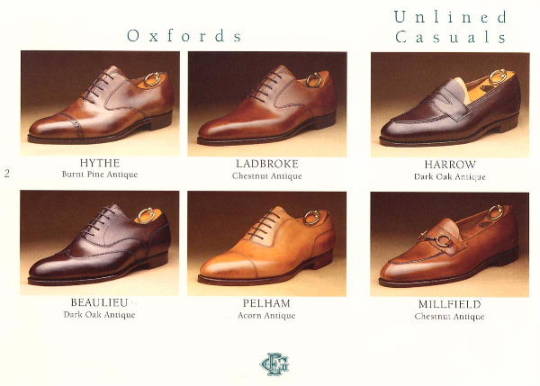
I don’t hang out in boardrooms or country clubs, but I’ve been wanting to wear a pair with a lightweight, summer sport coat or warm-weather causal suit on the weekends. Great for meeting friends at a cafe in the city or a night on the town on a warm, summer evening. The black calfskin 1954 model is perhaps the most iconic, but I like the designs at Mr. Porter. These sleeker, brown suede loafers are somehow sleazier while at the same time avoiding the gross, Wall Street connotations. I can imagine wearing them with slim jeans and a camp collar shirt (which are a mild obsession right now). More ‘70s Los Angeles than ‘80s New York.
The other option is to get something from Stefano Bemer or Edward Green, who offer slightly more conservative versions of the horsebit (or, at least, less instantly recognizable). George Wang, who often travels in bit loafers, sells a grey version of the Bemers through his shop BRIO (they take phone orders). Gentlemen’s Footwear in San Diego can also take custom orders for the Edward Green Millfield, pictured directly above. Made with Edward Green’s pie crust apron (hand stitched using a technique known as the split-and-lift), it’s available in any of the company’s leathers.
Alden also used to have a model, although they recently discontinued it following a request from Gucci. A few pairs can be found floating around here and there if you search (try calling Alden shops, as they sometimes have things in their back inventory rooms). Oak Street Bootmakers and Rancourt are nice alternatives if you want something American made. For something more affordable, check out Horatio.
Maybe the best way to not look like a jerk in horsebit loafers: don’t in fact be a jerk. I can’t say I’ll pull them off of successfully, but this spring might be the season I finally get a pair.
